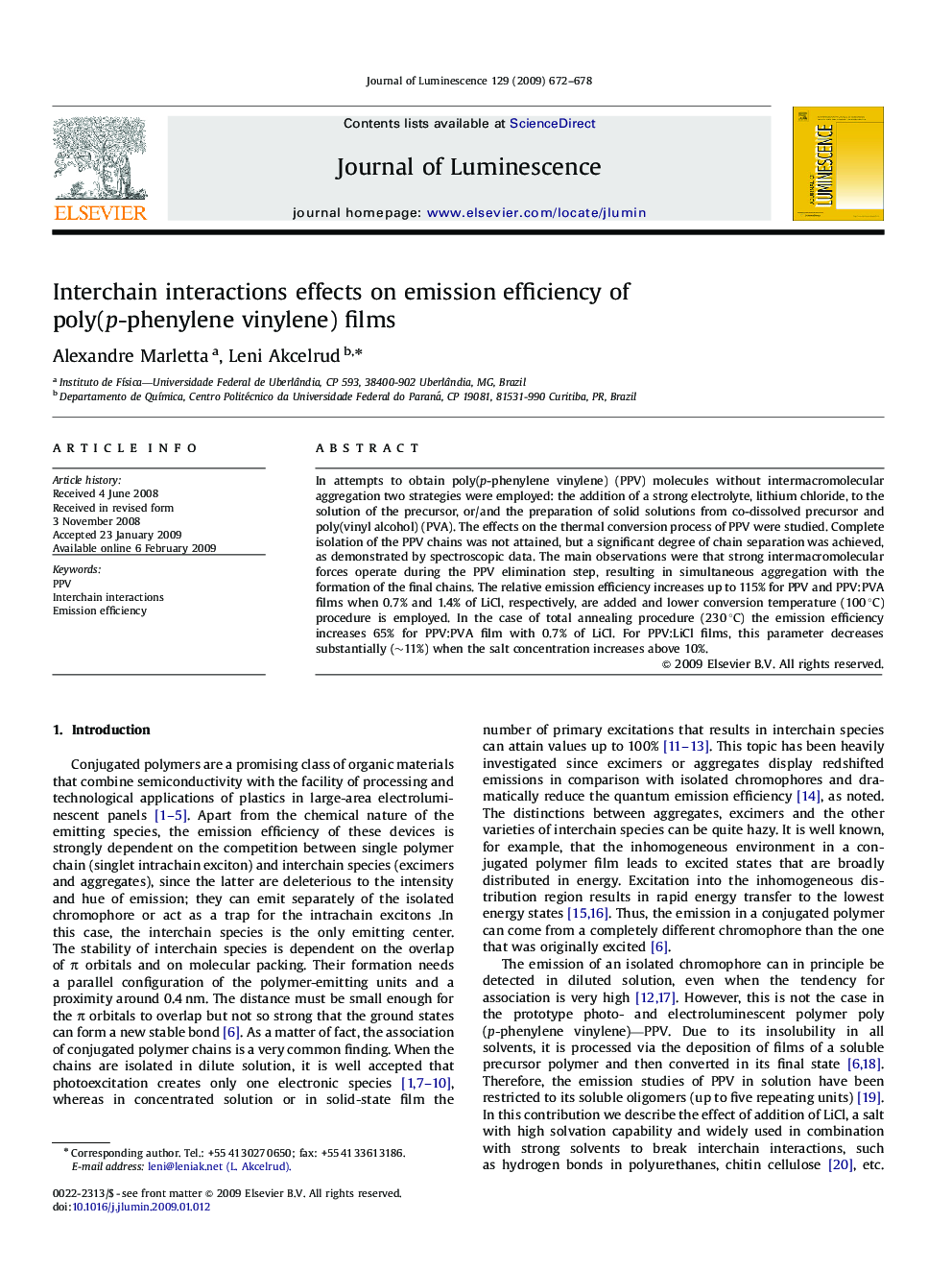| Article ID | Journal | Published Year | Pages | File Type |
|---|---|---|---|---|
| 5402598 | Journal of Luminescence | 2009 | 7 Pages |
Abstract
In attempts to obtain poly(p-phenylene vinylene) (PPV) molecules without intermacromolecular aggregation two strategies were employed: the addition of a strong electrolyte, lithium chloride, to the solution of the precursor, or/and the preparation of solid solutions from co-dissolved precursor and poly(vinyl alcohol) (PVA). The effects on the thermal conversion process of PPV were studied. Complete isolation of the PPV chains was not attained, but a significant degree of chain separation was achieved, as demonstrated by spectroscopic data. The main observations were that strong intermacromolecular forces operate during the PPV elimination step, resulting in simultaneous aggregation with the formation of the final chains. The relative emission efficiency increases up to 115% for PPV and PPV:PVA films when 0.7% and 1.4% of LiCl, respectively, are added and lower conversion temperature (100 °C) procedure is employed. In the case of total annealing procedure (230 °C) the emission efficiency increases 65% for PPV:PVA film with 0.7% of LiCl. For PPV:LiCl films, this parameter decreases substantially (â¼11%) when the salt concentration increases above 10%.
Related Topics
Physical Sciences and Engineering
Chemistry
Physical and Theoretical Chemistry
Authors
Alexandre Marletta, Leni Akcelrud,
